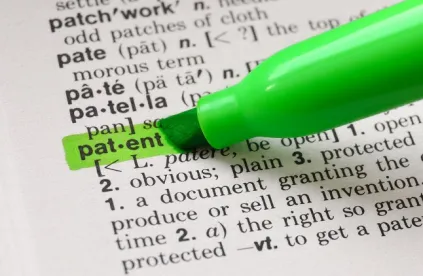Patents are expensive and should provide value to any company that spends money on them. There is no single way to value patents, and the value of a patent may change depending on the company’s needs and as products and markets develop. We offer here a few practical suggestions to value patents and prepare for – or avoid – an expensive patent litigation having all the emotions of a schoolyard brawl.
One simple, effective way to conceptualize the value of patents is to produce a list of actual or prospective benefits that have value for a company and then align each patent, or each family of related patents, against those benefits. Some measurable benefits include, for example:
- protecting a product or product candidate
- affecting a competitor or a competitor’s product or product candidate
- aligning with prospective commercial partners during partnering of a product candidate or corporate mergers or acquisitions
- supporting the business or a business deal
- adding perceived value, such as the number of patents that a company holds and/or reports during public filings, and
- providing the ability to turn patents into cash through out-licensing.
Alignment of each patent or patent family with an actual or prospective set of benefits is necessary to ensure that the attention and spending the patents receive are rational and realistic.
Assignment of value for each patent family is simplified by defining a few groups or categories of value. Executives can typically agree upon a set of benefits that are important to a company in advance and create several groups, each with a group name that corresponds to the set of benefits. Each group may be ranked as having more or less value to a company. Each patent family can then be assigned to a group and the patent family will be seen, for example, as having high, medium, or low value to a company. The amount of resources or attention given to each group may be defined in advance and each patent family will receive resources or attention based upon its group. In short, companies will be able to conceptualize and justify the value of a patent family and make informed decisions based on that value.
Conceptualizing value based upon benefits to a company makes it easier to assess value of a portfolio prospectively. However, it may be useful to re-evaluate the patents in a portfolio periodically. Once a patent has issued and a competitor’s products are on the market, it is possible to make an informed assessment of the likelihood that the patent would be found valid and infringed and to determine whether the patent covers features of the product that matter. Patents that are directed to technology or products that have become obsolete, despite the greatest of expectations, can be identified as having low value. Conversely, patents that are directed to core technology or products can be subject to more rigorous scrutiny by the informed patent practitioner and can be identified as having high value.
Valuation sometimes requires something other than a generalized categorization of value. Valuing patents monetarily can often be difficult. While objective analytical measures of portfolios can be done, they are often poor estimates of the value for any particular patent or patent family. Economic estimates, which are generally used to put a price on patents, are similarly limited. Those that consider future value are highly speculative and those that are based on actual costs fail to consider the potential use of the patent.
The value of a patent may also be measured against the likelihood that it would be found valid and infringed, and the importance of what it covers – for example, when litigation or a license is being considered. Patents that issue despite the existence of anticipatory art, or for which the meaning of the claims must be stretched to cover a product of interest, have less value. Conversely, patents for which there is no close prior art, and for which the claims clearly cover a product of interest, have more value. Patents that cover important aspects of successful products are more valuable than patents that cover incremental improvements in marginally successful products. Thus, in valuing a patent, it is useful to ask:
- are the patent claims validly issued, given the prior art and what is described in the patent
- do the claims cover both the company’s product and any potentially competing products, and
- do the claims cover the aspects of the product that are important for its success in the marketplace
In general, conceptualizing the value of a patent or patent family, whether done generally by category or monetarily by number requires a combination of legal assessments by patent professionals, considerations of perception, and evaluation of the products and markets that are covered. Regardless of the method used, business objectives should lead spending on patents, and reliance on objective measures should be tempered by an informed consideration of the legal and business context in which patents are – or might be – used. In this way, a company ensures that it holds patents that can be asserted, if necessary – and which may also prevent – the burdens of patent litigation that erupts like a schoolyard brawl.





 />i
/>i

